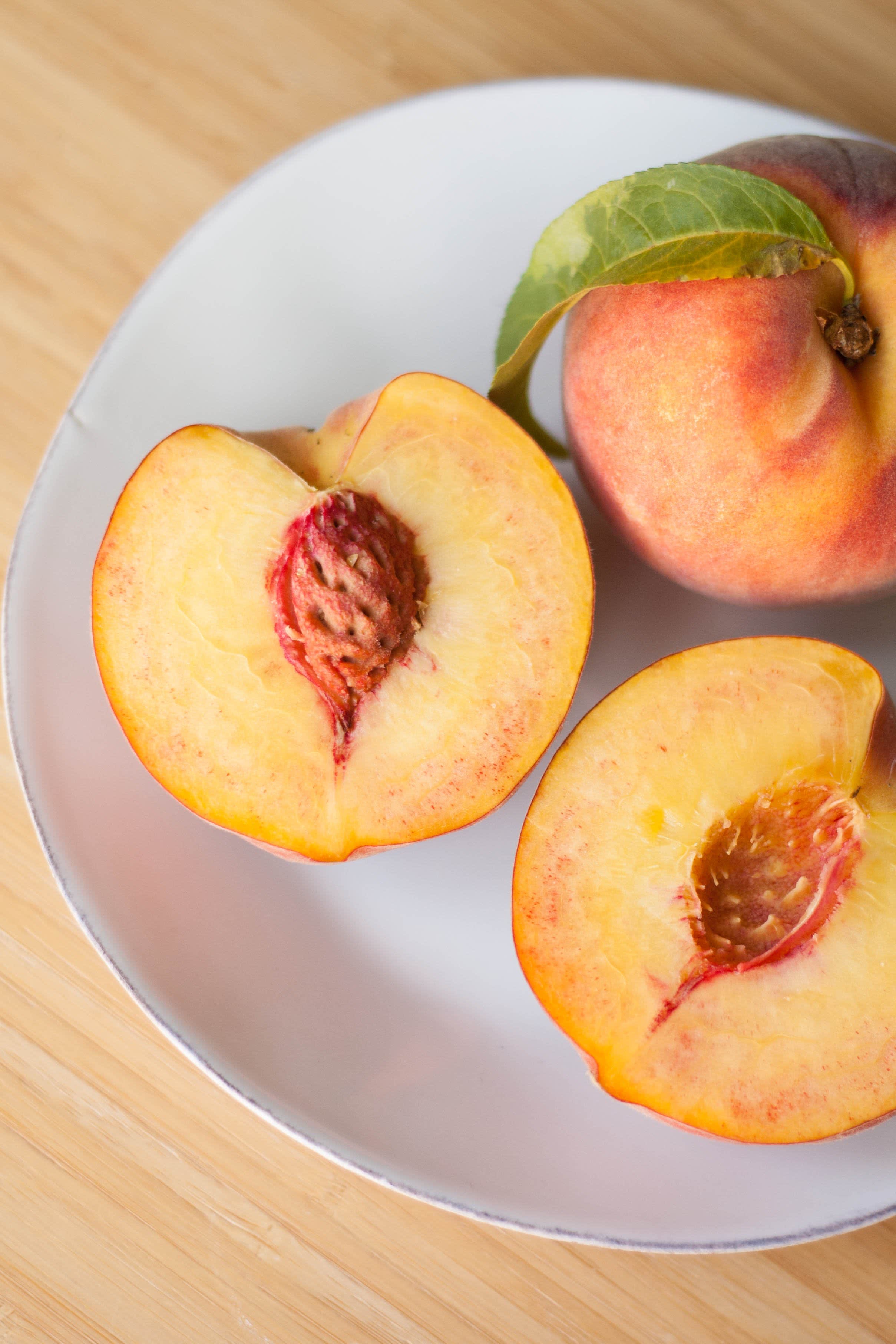
Answered 2 years ago Author has 561 answers and 355K answer views. A freestone peach has fruit that falls right off the pit.

Freestone or cling-free peaches refer to fruit where the flesh is not attached to the pit.
Difference between freestone and cling peaches. Freestone or cling-free peaches refer to fruit where the flesh is not attached to the pit. When you cut or bite into these peaches you can reach in and remove the pit easily making them a pleasure both to eat out of hand and for cooking baking and canning since they are easy to prep. As the names subtly imply the difference between freestone peaches and clingstone peaches is how much the fruits flesh clings to the pit.
Freestone peaches have fruit that easily pulls away from the pit while clingstone peach flesh stubbornly clings to the pit. A clingstone peach has fruit that does not fall off the pit. These peaches are fantastic for eating but arent the best for canning and freezing.
These varieties are available Mid-May to Early June. A freestone peach has fruit that falls right off the pit. These peaches are perfect for eating canning and freezing.
As the names subtly imply the difference between freestone peaches and clingstone peaches is how much the fruits flesh clings to the pit. Freestone peaches have fruit that easily pulls away from the pit while clingstone peach flesh stubbornly clings to the pit. Passionate about cooking with much other curiosities.
Answered 2 years ago Author has 561 answers and 355K answer views. Freestone peaches are sweet and juicy and can sometimes be slightly larger than clingstone and are wonderful eaten out of hand or. With freestone peaches when sliced the fruit easily separates from the pit or the stone.
Cling sometimes called clingstone can be sliced around the pit but when you try to gently twist the. Clingstones are best peeled and served whole or sliced. Freestone peaches relinquish their pits easily making it a cinch to cut the peach down the middle along its distinctive seamline and then twist its halves gently in opposite directions to separate them and expose their gorgeous hearts often rosy.
Cling stone versus freestone - the great peach debate. In my experience working in produce I can tell you that most people clamor for the freestone peach. They are just easier to slice up as you can pop the pit right out.
That is especially desired when someone is making a. Compared to freestone peaches clingstones have softer flesh that is juicier and sweeter. The flesh color tends to be yellow making clingstone peaches more acidic than white freestone peaches.
Because they are more difficult to eat fresh clingstone peaches are rarely sold in stores. Difference Between Freestone And Cling Peaches. What ever happened to elberta and belle of georgia peaches.
As the names subtly imply the difference between freestone peaches and clingstone peaches is how much the fruits flesh clings to the pit. Clingstone peaches are generally smaller and sweeter than freestone peaches. Clingstone vs Freestone.
The difference between clingstone and freestone peaches is very simple. You will definitely know if you are cutting into a clingstone peach. The pit endocarp will cling stubbornly to the flesh mesocarp of the peach.
Conversely freestone peach pits are easy to remove. In fact when a freestone peach is cut in half the pit will fall freely from the fruit as you upend the half. Freestone Peaches and Nectarines debodun Nov 19 2015 0923 AM 3 Is there any way to tell the difference between freestone and cling peaches or nectarines without cutting into the fruit.
As the names subtly imply the difference between freestone peaches and clingstone peaches is how much the fruits flesh clings to the pit. Freestone peaches have fruit that easily pulls away from the pit while clingstone peach flesh stubbornly clings to the pit. Almost all fresh peaches sold are freestone.
They are generally softer and juicier and because the pits pull away from the flesh so easily they can be cut nicely into uniform pieces for tarts or. Having been raised on a peach orchard the earlier varieties that ripen in mid June and July and mid-August are eating peaches not canning peaches. They are not free stones.
The later peaches which are used for canning are freestones. As the names subtly imply the difference between freestone peaches and clingstone peaches is how much the fruits flesh clings to the pit. Freestone peaches have fruit that easily pulls away from the pit while clingstone peach flesh stubbornly clings to the pit.
The difference between clingstone and freestone fruit Peaches nectarines plums and apricots all come in clingstone and freestone varieties. Clingstone fruits have pits that cling to the flesh of the fruit. If you cut a clingstone peach in half you will find it difficult to pull the.